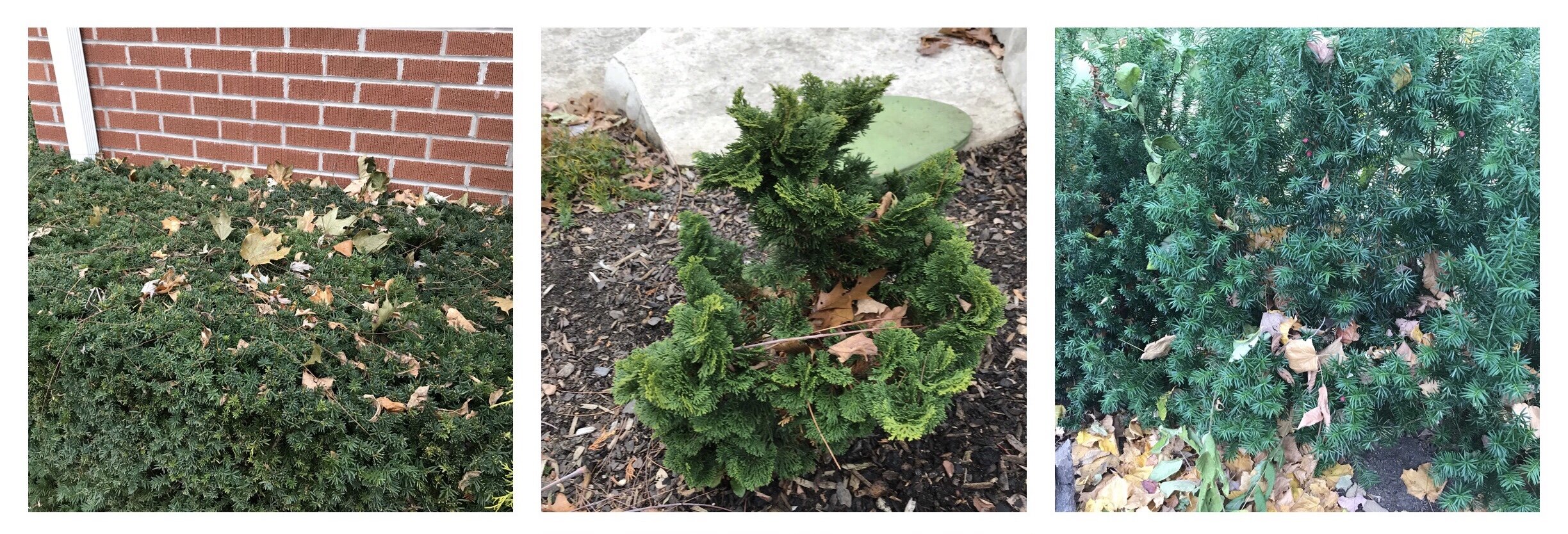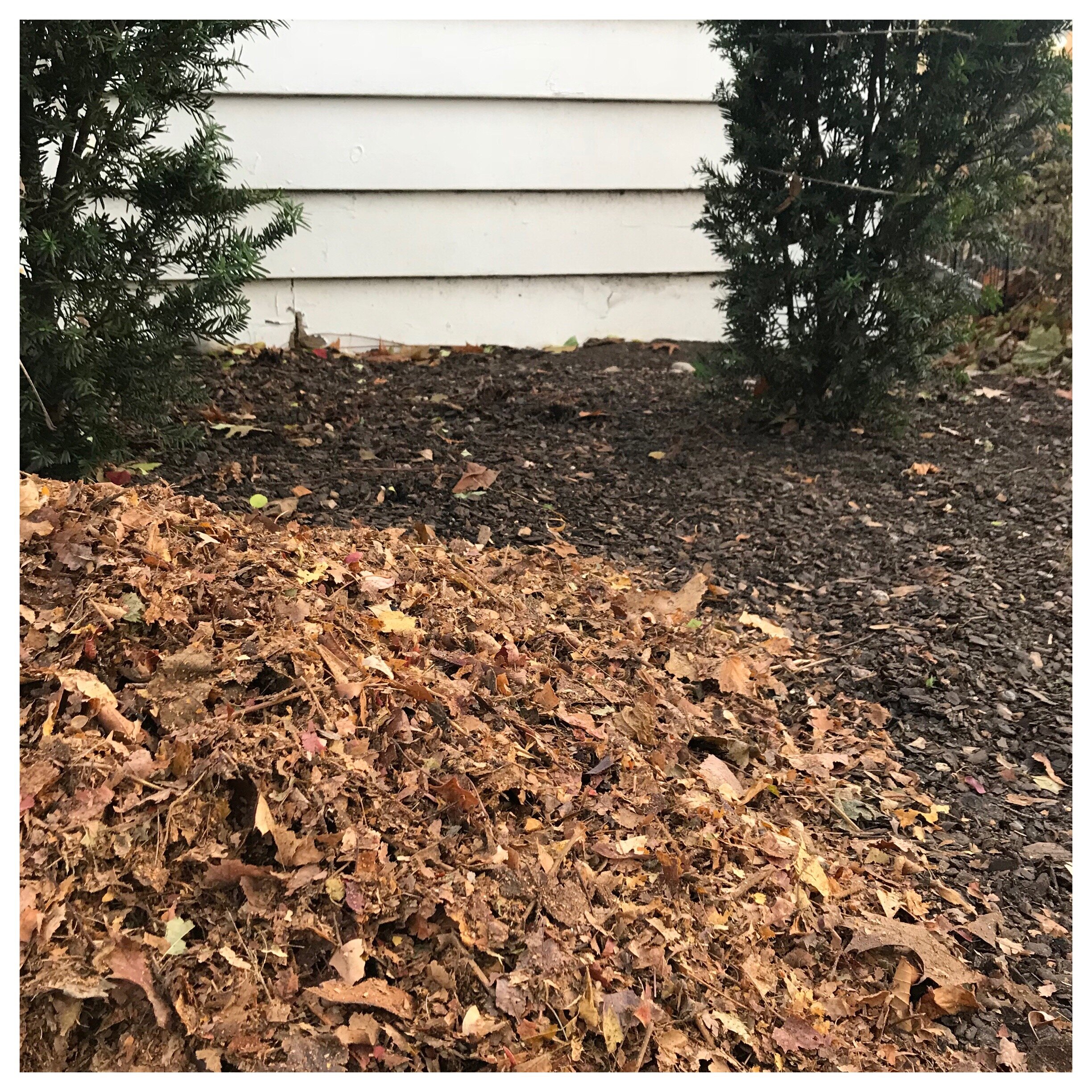Not all blankets are cozy…
Hello there! It’s been a while! I hope your fall has been going well; in this area, it has been an absolutely glorious one for working in the garden!
Glorious fall days! No better place to be than in a garden.
With that said, things are now coming to a close and with the snow just starting to fly, it is time to take a good hard look at the garden to ensure that it is in a good state headed into the winter months. Typically, one of my final gardening tasks of the season is to ensure that fallen leaves are not resting on any areas that will cause problems down the road. We have touched on this subject before, but I think it is a good one to revisit.
When it comes to leaf ‘litter’, it is a case of the good, the bad, and the ugly…
The Good
Leaf ‘litter’ is not really litter at all! It is a valuable resource for the soil and garden. When left on beds, leaves will break down over the winter and the nutrients and organic matter from them will return to the soil. This is nature’s way of recycling; giving back to the soil so the soil can continue to support life.
Leaf litter supports life in other ways too as it provides important shelter for overwintering insects and other garden critters- keeping them protected until the earth begins to warm once more. While small, these creatures can play important roles within the web of life that exists in the garden. From pollination to predation on garden pests, or even becoming food for other creatures, there is no doubt that promoting other forms of life within the garden can have huge benefits on how the garden functions as a whole.
Salamanders- one of the many types of critters that can benefit from the presence of leaf litter in the garden.
The Bad
With all that said, in some instances, leaves can really pile up! (Believe me, I know. With three huge shade trees bordering my urban-sized backyard, I know what it feels like to be waist-deep in leaves!) Add snow and rain to a massive leaf pile, and you end up with leaves that have matted together to form a really REALLY thick blanket…or solid mound. (Been there. Done that.). On bare soil, a blanket of leaves is generally not an issue; where we can run into problems is when this blanket lies on top of evergreen plants for prolonged periods of time… such as over the winter; and that’s when things can ‘get ugly’.
The Ugly
Leaves still need to ‘breathe’ (not really the technical terminology, but for simplicity’s sake, let’s consider it breathing); if a thick blanket of fallen leaves is left on top of foliage that needs to ‘breathe’, the result can be smothered foliage and even the death of some plants… big whoops.
Now before you start cursing your shade trees, it should be noted that not all leaves are considered equal when it comes to the ‘smothering factor’; some leaves break down much faster than others and tend to be a non-issue in the garden. Leaves that are notorious for creating thick mats are the large thick leaves of oak (Quercus spp.), Norway and (to a lesser extent) sugar maples (Acer platanoides and Acer saccharum) and catalpa (Catalpa spp.). In contrast, the smaller, thinner leaves of willow (Salix spp.) littleleaf linden (Tilia cordata), silver maple (Acer saccharinum), and ash (Fraxinus spp.), can still form mats however these leaves break down much quicker and they do not hang around long enough to cause issues. So what is the take-home message here? Know the leaves that fall on your property! If you know what you are up against, you will know how to prevent the issues.
A nice oak leaf mat beginning to form (left) and the thin, non-persistent leaves of silver maple (right). The oak leaves can pose some problems in the garden when left covering certain plants, while the leaves of silver maple are generally not a concern.
The Solution is Simple
As you probably guessed, it is really important to pick leaves off all your evergreen plants (trees, shrubs, perennials, and groundcovers) to prevent foliage from being smothered. If you have evergreen trees and shrubs, don’t forget to look within the branches to make sure there aren’t any unwanted blankets within the plants. You will be amazed by how many leaves you pull out!
Matted leaves on evergreen groundcovers can cause foliage to die if the leaves are left to remain throughout the winter months and into the spring. Removing the leaves can help prevent issues down the road.
Fallen leaves resting on and within a few evergreen shrubs. I always make sure to remove these leaves to prevent future foliage problems (smothering), not to mention it just looks nicer too!
A couple more tips for managing leaves
If you tend to have large quantities of leaves- where allowing them to lie where they fall is just not practical, or you have leaves with a tendency to become ‘smothering’, you may want to consider buying a leaf mulcher (essentially a glorified ‘whipper snipper’ in a barrel). A mulcher will shred the leaves into a beautiful mulch that you can apply to your garden knowing that it will not cause any thick smothering blankets and that it will be mostly broken down come spring. Additionally, a mulcher helps reduce the volume of leaves, so it becomes possible to allow more leaf ‘litter’ to remain on your garden than if the leaves were to remain whole. All-in-all, a leaf mulcher is a fantastic way to make use of a free soil amendment provided to us every fall, courtesy of Mother Nature.
Ahhhh… it’s so satisfying to see a pile of mulched leaves, ready for distribution throughout the yard! Hmm- what plants should I buy with all the money I save on soil amendments!?!
Where leaf quantities are excessive, have a designated space for leaf ‘overflow’ such as a chicken-wire enclosed area. Having an enclosure is handy as it prevents the leaves from blowing around (your neighbours will thank you). It is also a nice contained place where the leaves can slowly break down into leaf mold which can then be used in the garden. Alternatively the excess leaves can be put in a compost pile to speed up decomposition. In general, the leaf mold enclosure and the compost pile are two handy strategies that can be used if you want to keep all your leaves but have too many to allow to sit on the garden over the winter.
And that’s a wrap! Speaking of wraps… stay tuned for my next post which is about another task that I ‘wrap up’ at the end of a gardening season. Any guesses as to what that is???






